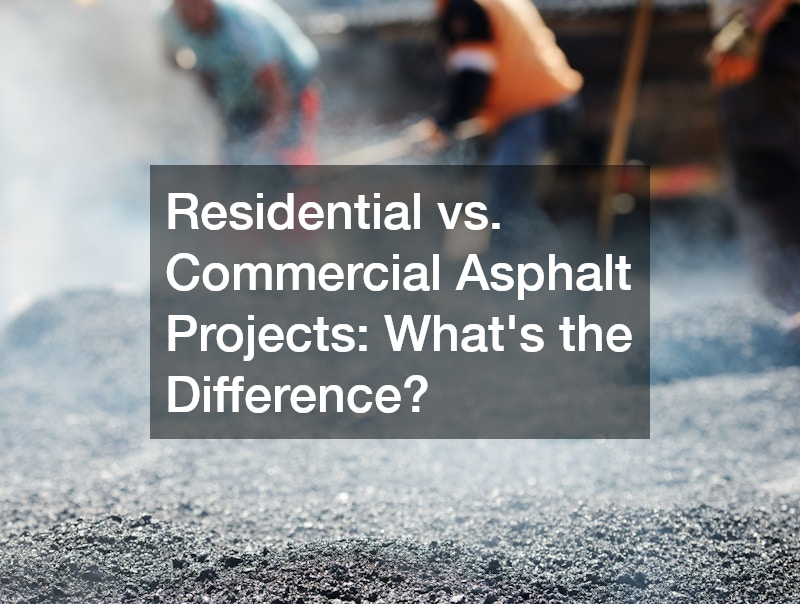Remodeling a kitchen is a major home improvement project that can dramatically improve both functionality and property value. However, without careful planning, renovations can quickly become overwhelming, expensive, and time-consuming. A detailed kitchen remodel checklist is essential to keep everything organized, from design decisions to scheduling and budget management. Homeowners should break the project into clear steps, prioritize tasks, and establish a realistic timeline.
By planning ahead, you reduce stress, avoid costly mistakes, and ensure a smoother remodeling experience. A comprehensive checklist covers everything from layout and storage considerations to plumbing, electrical work, and finishing touches. It also accounts for scheduling contractors, purchasing materials, and coordinating deliveries. Having a thorough plan allows homeowners to anticipate potential issues and address them proactively. This approach helps maintain momentum during the renovation, ensures tradespeople work efficiently, and guarantees that your finished kitchen meets both practical needs and design expectations. Following a checklist empowers homeowners to make informed decisions, manage costs effectively, and ultimately create a kitchen that enhances daily life while boosting the long-term value of the home. Here’s where to start with your own!
Planning Your Kitchen Layout

The layout of a kitchen sets the stage for functionality, convenience, and aesthetic appeal. A well-designed layout ensures efficient workflow between the cooking, cleaning, and storage areas. Homeowners should consider the “work triangle” concept, which connects the sink, stove, and refrigerator for optimal movement during meal preparation. Adequate counter space, strategically placed outlets, and thoughtful storage solutions are critical to prevent clutter and maximize usability. Choosing kitchen cabinets early in the planning phase defines the style, storage capacity, and budget for the space. Accurate measurements for upper and lower cabinets help avoid costly adjustments during installation.
In addition, incorporating pull-out drawers, organizers, and specialty storage solutions can further enhance usability. Working with local kitchen remodelers provides expert insight into design options, material selection, and construction techniques. Professionals can suggest solutions that homeowners might not have considered, such as space-saving layouts or ergonomic designs. Additionally, remodelers ensure that the kitchen complies with building codes, local regulations, and safety standards. By investing time in careful planning and professional guidance, homeowners can create a kitchen layout that is both practical and visually appealing, reducing stress and complications during the construction phase.
Ventilation and Air Quality
Maintaining proper ventilation is essential for a comfortable, safe, and odor-free kitchen environment. Cooking produces smoke, heat, steam, and airborne grease particles, all of which can accumulate on surfaces and reduce indoor air quality. Incorporating an effective ventilation plan during the remodel ensures that heat and odors are efficiently removed, protecting walls, cabinets, and ceilings from damage over time. A well-designed ventilation system also prevents excessive humidity, which can contribute to mold growth and structural deterioration. Hiring a professional kitchen hood cleaner ensures that existing systems are functioning properly and that new installations meet efficiency and safety standards.
Clean hoods and vents not only remove odors and contaminants but also reduce fire hazards caused by grease buildup. Planning this service as part of your remodel checklist allows homeowners to integrate ventilation with appliance placement and layout decisions. Regular cleaning and maintenance of ventilation systems during and after the remodel are critical for sustaining long-term efficiency. Proper airflow contributes to a healthier, more comfortable cooking space, minimizes lingering odors, and ensures that your kitchen remains both functional and visually appealing throughout daily use.
Countertops and Surfaces

Selecting countertops is one of the most significant decisions in a kitchen remodel because surfaces must balance durability, functionality, and design appeal. Countertops withstand heavy use for cooking, prep work, and appliance placement, so material choice affects longevity and maintenance. A granite counter is a popular option because it combines elegance with strength, offering resistance to heat, scratches, and stains when properly sealed. Precise measurements and professional installation are essential to achieve a seamless, durable finish that aligns with cabinets, backsplashes, and appliances. Homeowners should consider edge profiles, finishes, and the integration of sinks and cooktops when planning installation.
Coordination with other trades ensures that the countertop fits perfectly within the overall layout. Planning countertops early in the remodel schedule prevents delays and allows time for selection, delivery, and fabrication. Well-chosen and installed countertops enhance usability, elevate kitchen aesthetics, and provide a long-lasting surface for daily activities. By carefully selecting materials and working with experienced professionals, homeowners can ensure that their new kitchen surfaces combine beauty, functionality, and lasting value.
Plumbing Considerations
Proper plumbing is vital for kitchens, as sinks, dishwashers, refrigerators, and other appliances rely on well-functioning water lines. Incorrect installation or aging pipes can lead to leaks, water damage, or interruptions in daily use. Addressing plumbing early ensures all fixtures are correctly positioned, code-compliant, and integrated with the kitchen layout. Experienced plumbers can handle pipe routing, fixture installation, and coordination with other trades to prevent disruptions. Timely inspections, maintenance, and professional guidance reduce the likelihood of costly repairs while ensuring that water flows efficiently throughout the kitchen.
Planning for plumbing also includes preparing for garbage disposals, dishwashers, and potential water filtration systems, ensuring seamless integration. Routine maintenance further supports long-term reliability. Scheduling a drain cleaning service before remodeling ensures all drains are free of blockages and ready for construction work. Preventive maintenance protects pipes from debris accumulation and reduces the risk of clogs or backups, allowing the project to progress smoothly and avoiding interruptions to your daily routine.
Flooring Selection

Flooring selection is both an aesthetic and functional consideration for kitchen remodels. The material must withstand daily foot traffic, spills, moisture, and heat while complementing the overall design. Popular choices include tile, hardwood, vinyl, and engineered materials, each with unique benefits for durability and style. Visiting multiple flooring stores allows homeowners to compare finishes, textures, colors, and price points to find the ideal fit for their kitchen. Proper selection ensures compatibility with cabinets, countertops, and appliances. Scheduling flooring installation early in the remodel timeline prevents conflicts with other trades and allows for proper subfloor preparation.
High-quality flooring enhances usability, provides a polished appearance, and contributes to long-term property value. Professional installation ensures even surfaces, proper alignment, and lasting performance, making the kitchen both practical and visually cohesive. By carefully planning flooring, homeowners can enjoy a functional and beautiful space for years to come.
Painting and Finishes
Walls, ceilings, and trim dramatically impact the overall style and atmosphere of a kitchen. Professional painting creates a polished, cohesive look and protects surfaces from humidity, grease, and daily wear. Experienced painters provide expertise on color selection, paint types, and application techniques to achieve consistent coverage and durability. Including painting early in the remodel schedule allows for proper drying times and coordination with cabinet, flooring, and countertop installation.
Proper preparation, such as sanding and priming, ensures smooth results that enhance the overall aesthetic of the kitchen. High-quality finishes not only improve visual appeal but also contribute to the longevity of walls and trim, reducing maintenance needs over time. Thoughtful paint selection and professional execution complement other design elements, creating a harmonious, inviting space for cooking, dining, and entertaining.
Water Quality and Filtration

Clean water is vital for cooking, drinking, and maintaining appliances. Installing a water filtration system ensures safe, high-quality water throughout the kitchen. Proper water purifier installation guarantees the system integrates seamlessly with your plumbing, providing filtered water directly at sinks or dedicated outlets. Early planning avoids retrofitting issues and ensures that space, plumbing connections, and accessibility are considered.
Well-maintained filtration improves taste, removes sediment, and minimizes chemical contaminants, protecting both health and appliances. Homeowners benefit from long-term convenience, knowing they have safe water for drinking, cooking, and cleaning. Integrating water purification during the remodel ensures it is a permanent, functional feature of the kitchen, enhancing both comfort and property value.
Water Supply from Wells
For homes with private water sources, planning for integration with kitchen plumbing is essential. A well provides the foundation for consistent water supply, but proper management is key to maintaining flow and quality. Consulting a water well drilling company ensures that wells meet household needs, including depth, capacity, and quality standards. Professionals can assess existing systems, recommend upgrades, and schedule maintenance to prevent issues during and after the remodel.
Including wells in the kitchen remodel checklist guarantees uninterrupted water supply, protects appliances, and supports long-term reliability. Coordinating water supply early in the planning process ensures seamless integration with sinks, filtration systems, and dishwashers, allowing the kitchen to function optimally from day one.
Appliances and Equipment
Selecting appliances is critical for kitchen functionality, energy efficiency, and aesthetic appeal. Proper sizing, placement, and compatibility with layout prevent issues with workflow or spacing. Early appliance selection avoids delays during construction and allows coordination with cabinetry, countertops, and plumbing. Professional guidance ensures seamless installation and alignment with electrical and water connections. Planning placement of stoves, refrigerators, and dishwashers is essential to avoid gaps or misalignment.
Well-coordinated appliance installation supports the kitchen workflow, making cooking and cleaning tasks efficient. By addressing appliances early, homeowners ensure the remodel progresses smoothly and that the final kitchen meets daily needs, style expectations, and long-term durability.
Scheduling and Coordination
Kitchen remodels involve multiple trades working together, requiring careful scheduling. Clear timelines prevent overlap, delays, and confusion. Coordination between local kitchen remodelers, plumbers, painters, and other contractors ensures that each phase flows logically. Sequencing work effectively minimizes downtime and allows projects to finish on schedule. Planning visits, deliveries, and installation dates ensures that materials and professionals are available when needed.
Proper coordination prevents costly rework, enhances efficiency, and ensures the remodel adheres to budget and timeline. Homeowners benefit from a smoother experience when every task is planned in advance and every contractor knows their responsibilities, creating a cohesive, well-executed renovation.
Budgeting and Contingency Planning
Budgeting is a critical component of kitchen remodeling. Beyond material costs and labor fees, homeowners should plan for permits, inspections, and unexpected expenses. Setting aside a contingency of 10–20% of the total budget covers unforeseen issues without jeopardizing the project. Tracking expenses for items such as granite counters, cabinetry, flooring, and professional services helps maintain financial control. Regular review of costs allows adjustments before overspending occurs.
Thoughtful budgeting ensures priority items receive appropriate funding, prevents compromises on quality, and guarantees that the remodel stays within financial limits. Planning for contingencies also reduces stress and gives homeowners flexibility when changes arise during construction.
Safety and Clean-Up
Construction debris, dust, and leftover materials can pose health and safety risks. Protecting surfaces and appliances minimizes damage and simplifies post-remodel cleaning. Scheduling professional services, such as a kitchen hood cleaner, ensures ventilation systems remain functional and free from grease or construction residue. Including cleanup and safety measures in the checklist ensures a safe work environment for contractors and homeowners alike.
Preventing damage to flooring, cabinets, and countertops preserves the investment and allows the kitchen to be ready for use immediately after completion. Thoughtful planning for safety and cleanup enhances efficiency, prevents accidents, and protects both the home and renovation team.
Finishing Touches
Finishing touches complete the kitchen remodel, tying together cabinets, countertops, appliances, flooring, and lighting. Selecting hardware, backsplashes, and decorative accents ensures a cohesive, visually appealing design. Professionals can advise on practical solutions, balancing style with usability and storage optimization. Well-planned finishing details, from handles to lighting placement, elevate the overall space and enhance both function and aesthetics. Taking the time to thoughtfully integrate these final elements guarantees that the kitchen feels complete, harmonious, and welcoming. Finishing touches increase the home’s market appeal and create a space that is both practical for daily use and visually stunning for entertaining or showcasing.
A comprehensive kitchen remodel checklist ensures every detail is considered, from kitchen cabinets and local kitchen remodelers to plumbing, flooring, appliances, and finishing touches. Including services like kitchen hood cleaner, granite counters, water purifier installation, and water well drilling company ensures functionality, safety, and long-term reliability. Following a detailed plan reduces stress, prevents costly mistakes, and creates a kitchen that is both beautiful and highly functional. A proactive approach maximizes comfort, efficiency, and property value, giving homeowners confidence in their investment while creating a space they will enjoy for years. Proper planning, coordination, and professional involvement make all the difference in a successful remodel.



